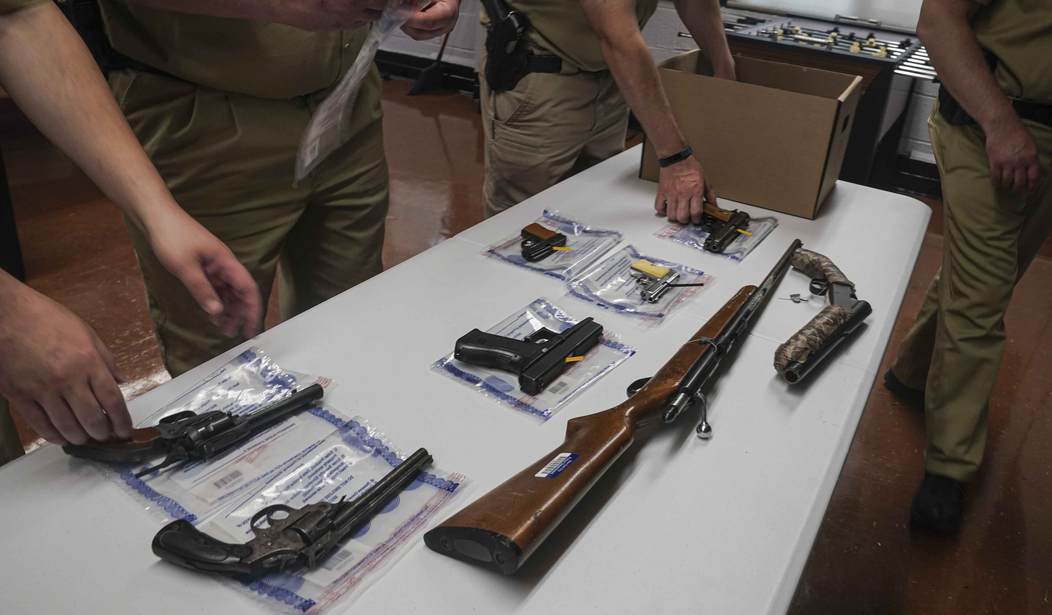I doubt there’s a more maligned character in the debate over gun rights than Dr. John Lott. Just ask any gun control activist. They can’t stand him. His research often refutes their favorite narratives. His command of the data often leaves them little refuge. I’ve had the opportunity to meet and talk with Dr. Lott on occasion since 2018. I’ve found him knowledgable, willing to test a hypothesis, willing to have his ideas and research challenged. In short, when I look back at his work, I’m convinced it’s less about defining gun policy and more about getting to a set of facts that should influence gun policy. Hence the animus.
In his latest article in Real Clear Politics raises critical concerns about the credibility of government data, specifically from the FBI and the Centers for Disease Control (CDC), in the ongoing debate on policing and gun control in the United States. Lott argues that these agencies have been influenced by political agendas, thereby skewing the data on the efficacy of defensive gun use and the actual number of active shooter incidents that are stopped by armed citizens. Let’s parse his critique.
The CDC and Defensive Gun Use
Lott begins his critique by calling out the CDC for removing its estimates on defensive gun use at the request of gun control organizations. According to Lott, for nearly a decade, the CDC cited a range of 64,000 to 3 million annual incidents where people used guns defensively. The removal of these numbers from the CDC’s website, Lott suggests, indicates political influence affecting empirical data, thereby obstructing honest discourse on gun control. As reported by The Reload, it appears gun control groups were at the source of the take down. So why did the CDC capitulate? It’s pretty clear that gun control activists and the Biden Administration dislike any discussion of defensive gun uses and will stop at to block any narrative which furthers a citizen’s right to defend themselves and or the fact that firearms are used quite frequently in self-defense. With over 496 defensive gun uses in 2023, with 147 in just in the past 90 days, the Defensive Gun Use tracker hosted by the Heritage Foundation shows how often firearms are used by Americans to defend themselves.
[insert DGU graphics]
The FBI and Active Shooter Incidents
Lott’s main contention with the FBI centers around its reporting of active shooter incidents, specifically the role of armed citizens in stopping these events. He alleges that the FBI’s count is severely underestimated and that his organization, the Crime Prevention Research Center (CPRC), found the real rate to be nearly eight times higher. Lott claims that if the focus is narrowed to places where carrying firearms is permitted, the rate is eleven times higher. In fact, Lott’s research tells a different story,
Out of 440 active shooter incidents from 2014 to 2022, an armed citizen stopped 157. We also found that the FBI had misidentified five cases, usually because the person who stopped the attack was incorrectly identified as a security guard.
Lott criticizes the FBI for relying on news reports to compile data, implying that such a method is inherently flawed. While it’s true that using media coverage can lead to underreporting or misreporting, it’s the FBI’s lack of follow up that ensures its data is in error. Their unwillingness to improve their data collection methods, even after multiple requests to correct it, sure smacks of bias.
Glenn Kessler reporting as “The Fact Checker” for the Washington Post called out the FBI, citing their own report,
But the FBI reports, though often cited by the news media, have numerous errors and, by the FBI’s own admission, are not necessarily complete or even consistent in how certain criteria are applied. “Incidents identified in this study do not encompass all gun-related situations; therefore caution should be taken when using this information without placing it in context,” the FBI said when it issued its first report.
The primary issue here is not necessarily methodology, but intent. Does the FBI follow up on those news stories with local law enforcement to get a more accurate and complete picture of the defensive gun use? With the FBI’s massive budget, they certainly could do a better job of following up on the incidents, as Lott’s organization has with “a budget of a few thousand dollars.” As Lott rightly points out, “The FBI data on active shootings is missing so many defensive gun uses that it’s hard to believe it isn’t intentional. Errors can happen, but the failure to fix past reports shows a troubling disregard for the truth.”
Avoiding repeated questions by Kessler, the FBI responded,
We have no additional information to provide other than what is provided within the active shooter reports on our website.
When the self-proclaimed “defenders of democracy” like the Washington Post get the run around from the FBI, it lends credence to Lott’s assertions. Irrespective of one’s stance on gun control, the credibility of data used in shaping public policy is of utmost importance. If government agencies are providing inaccurate information—either intentionally or even inadvertently, and are unwilling to correct it—it hampers the ability to form effective policies and deepens public mistrust in essential institutions.
John R. Lott’s research is a provocation that should encourage further examination of how data on policing and gun control is collected and presented. Above all, this debate underscores the need for transparent, reliable data collection methods that can serve as the foundation for public policy decisions. The news media, when using FBI data should disclaim that the data as the FBI did and should consider giving stories about defensive firearms uses more airtime.








Join the conversation as a VIP Member